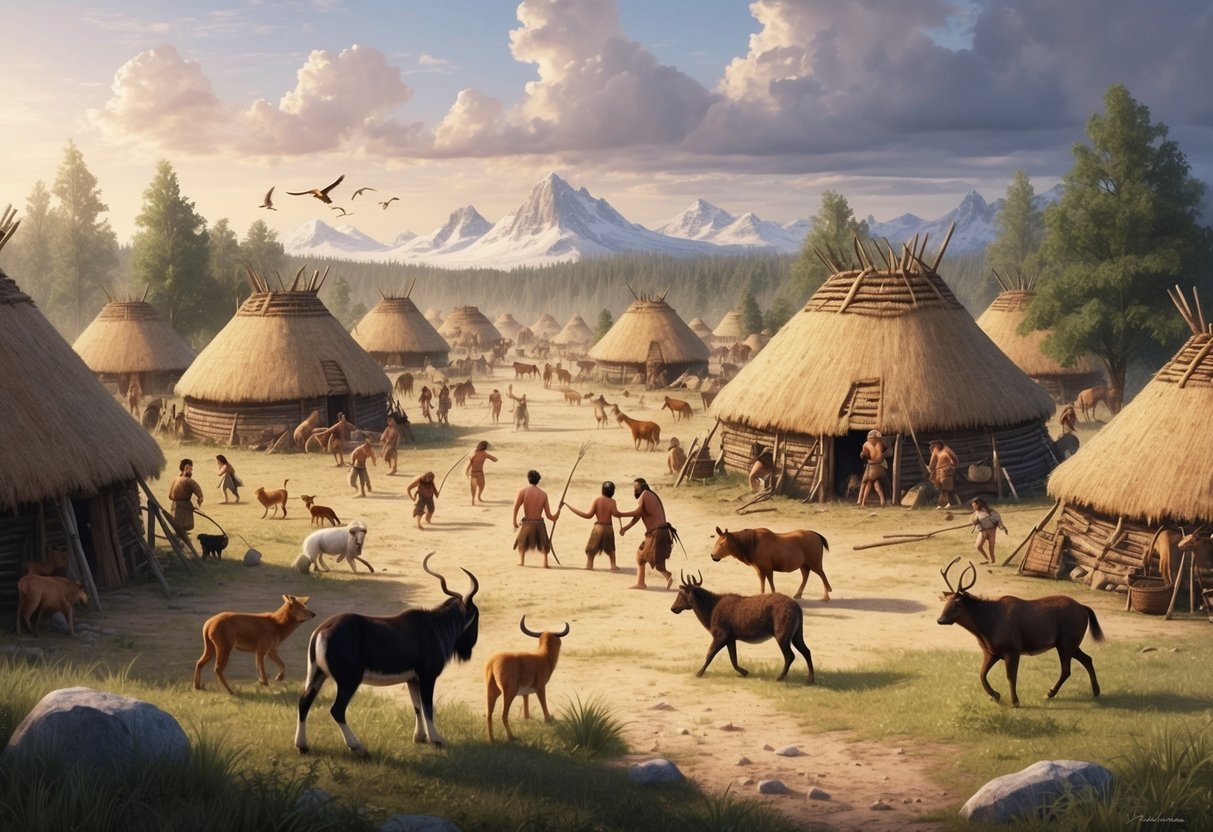The idea of pre-ice age civilizations sparks curiosity and wonder. Many people ask if humans built advanced societies before the last ice age ended about 12,000 years ago. Some think there may be lost cities or technologies from this time.
Scientists look for clues about early humans in fossils and artifacts. They study bones, tools, and other remains to piece together our past. So far, the evidence points to simple hunter-gatherer groups before farming began.
Despite claims of ancient advanced civilizations, researchers have not found proof of complex societies existing that long ago. Homo sapiens evolved around 300,000 years ago, but only started building cities much later. While early humans were clever, they lived in small bands and used basic stone tools for most of their history.
Understanding Pre Ice Age Times
The world before the Ice Age was very different from today. Earth’s climate changed a lot over time. We can learn about it from rocks and old plant and animal remains.
Climate of the Past
Earth was much warmer before the Ice Age. The Paleolithic period saw big changes in temperature. Some times were really hot, like the Paleocene-Eocene Thermal Maximum.
During this hot time, the planet heated up fast. It was so warm that palm trees grew near the North Pole! Animals and plants had to move or change to survive.
The air had more carbon dioxide back then. This made the Earth like a greenhouse. Oceans were warmer too. This caused some sea creatures to die out.
Geological Indicators
Scientists look at rocks and dirt to learn about the past. These give clues about old climates and life.
Sediments are layers of dirt and rock that built up over time. They can show what the weather was like long ago. For example, some layers show it was once very dry.
Fossils are old remains of plants and animals. They tell us what lived back then. Some fossils have carbon in them. This fossil carbon helps scientists figure out how old things are.
Ice cores from glaciers also give information. They trap tiny air bubbles from long ago. These bubbles show what the air was like before the Ice Age.
Early Human Development and Migration
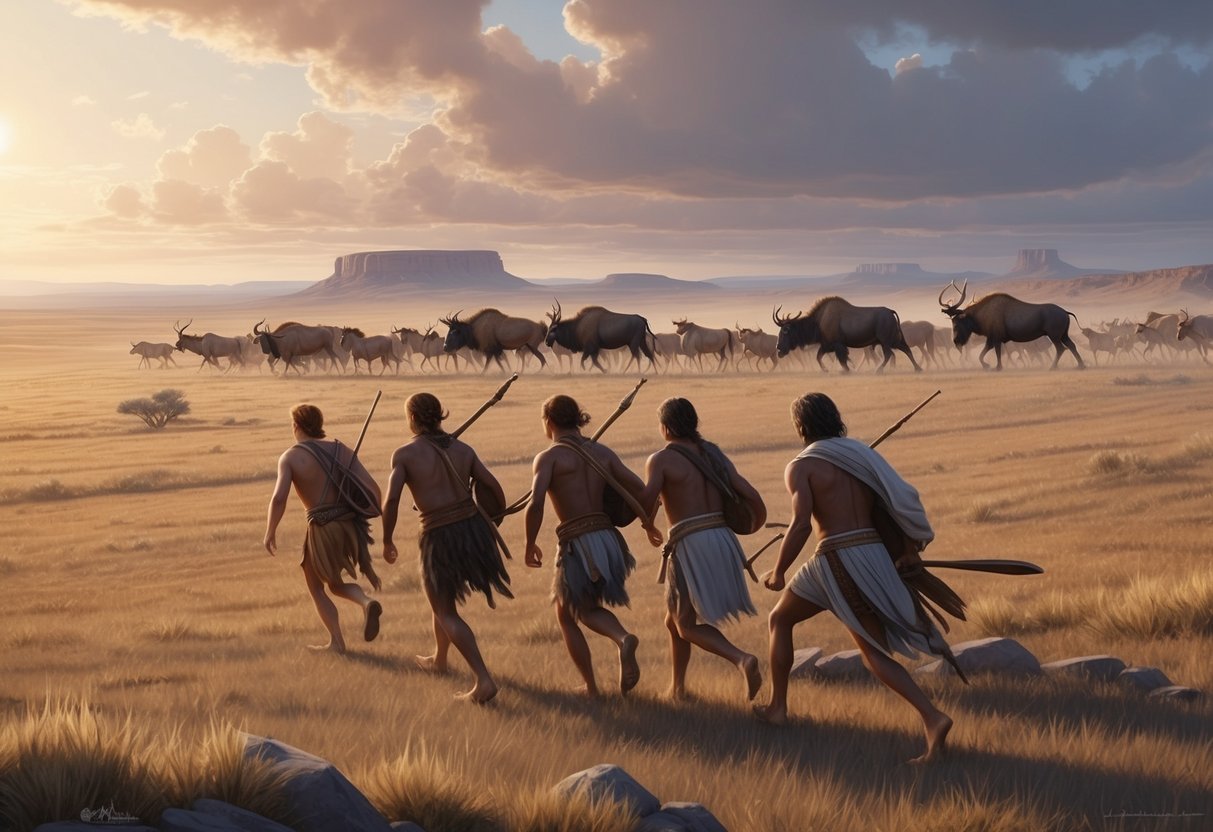
Our ancestors left Africa and spread across the world. They evolved and adapted to new places over many years.
Evolution of Homo Sapiens
Homo sapiens evolved in Africa around 300,000 years ago. They had bigger brains and better tools than earlier humans.
These early people made art and had complex social groups. They used fire and cooked food, which helped their brains grow.
Homo sapiens were smart and flexible. This helped them survive in different places as they moved around.
Patterns of Migration
People first left Africa about 70,000 years ago. They spread to Asia, Europe, and later to other continents.
Some key migration routes:
- Along coasts and rivers
- Across land bridges during ice ages
- Over short sea crossings
Early humans adapted to new climates as they moved. They created new tools and ways of living.
In Europe, they met Neanderthals. In Asia, they encountered other human species. These meetings led to some mixing between groups.
Cultural and Technological Advancements
Early humans made huge leaps forward in culture and technology. They learned to talk, make tools, and use fire. These skills helped them survive and thrive.
Introduction of Language
Language changed everything for early humans. They could share ideas and work together better. At first, they likely used simple sounds and gestures. Over time, these grew into more complex words and phrases.
Stone Age humans started to use symbols too. They made cave paintings and carved figures. These may have been early forms of writing. Language helped people pass on knowledge to the next generation.
As groups grew, so did their vocabularies. Different languages began to form in different areas. This helped create unique cultures around the world.
Development of Tools
Early humans were clever tool-makers. They started with simple stone tools. These helped them hunt and gather food more easily.
Paleolithic hand axes were an important invention. People made them by chipping away at stones to create sharp edges. These tools had many uses, from cutting meat to digging roots.
Over time, tools became more complex. People learned to attach handles to stone blades. This made the tools even more useful. They also began to make tools from bone and antler.
Tool-making skills were passed down and improved over generations. This led to better hunting, food preparation, and shelter-building.
Use of Fire and Shelter
Fire was a game-changer for early humans. It provided warmth, light, and protection from predators. People could cook their food, making it easier to eat and digest.
Fire also allowed humans to make stronger tools. They could harden wooden spears in the flames. This made hunting large animals safer and more successful.
Shelters became more advanced too. Early humans moved from basic lean-tos to more sturdy structures. They used materials like wood, stone, and animal skins.
These improvements helped people survive in harsh climates. They could live in colder areas and stay put for longer periods. This led to the growth of larger, more permanent settlements.
Evidence of Early Societies
Exciting finds from long ago show us how people lived before the ice age. Traces of their homes and tools give us clues about their daily lives.
Archaeological Discoveries
Archaeologists have found amazing things from early societies. In Turkey, they uncovered Göbekli Tepe, a site over 11,000 years old. It has big stone pillars with animal carvings.
In other places, they’ve found old jewelry and art. These items tell us about what people valued back then.
Some discoveries even hint at farming and building. This shows that early humans were quite clever!
Rock Shelters and Settlements
People long ago often lived in caves and rock shelters. These places protected them from the weather and wild animals.
Archaeologists have found old campsites too. They can tell where people slept and cooked their food.
In some areas, there are signs of small villages. These early settlements had simple homes made of wood or animal skins.
Rock art in these shelters gives us a peek into their world. Paintings show the animals they hunted and their daily activities.
Subsistence and Survival Strategies
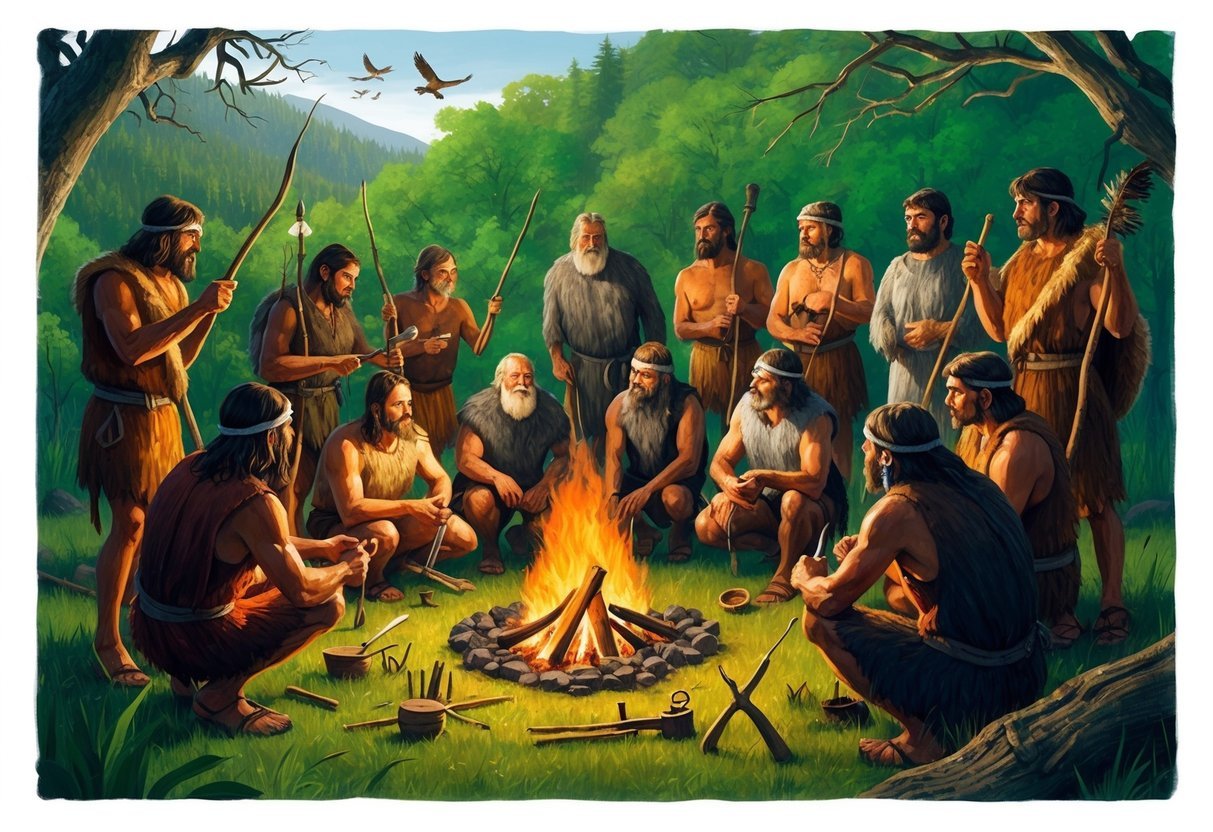
Early humans used clever ways to find food and stay alive. They hunted animals, gathered plants, and made tools to help them. As the climate changed, they had to adapt to new places and challenges.
Hunting and Gathering
Pre-ice age people were skilled hunters and gatherers. They tracked large animals like mammoths and used spears to catch them. This gave them lots of meat, bones, and skins.
They also picked berries, nuts, and edible plants. Women often did the gathering while men hunted. This teamwork helped groups survive.
Tools were key for hunting and gathering. People made sharp stone points for spears and knives. They used animal skins to make containers for carrying food.
Groups moved with the seasons to find the best food sources. They followed animal herds and went to areas with plentiful plants.
Adaptation to Environments
As climates shifted, early humans had to adapt quickly. They learned to live in many different places, from forests to grasslands.
In cold areas, they made warm clothing from animal skins. The invention of the needle was a big help. It let them sew tight-fitting clothes to keep out the cold.
People built shelters using materials they found nearby. In some places, they used mammoth bones and skins to make huts.
They also made new tools for each environment. For example, fishing hooks for catching river fish or special spears for hunting in forests.
Theories of Lost Civilizations
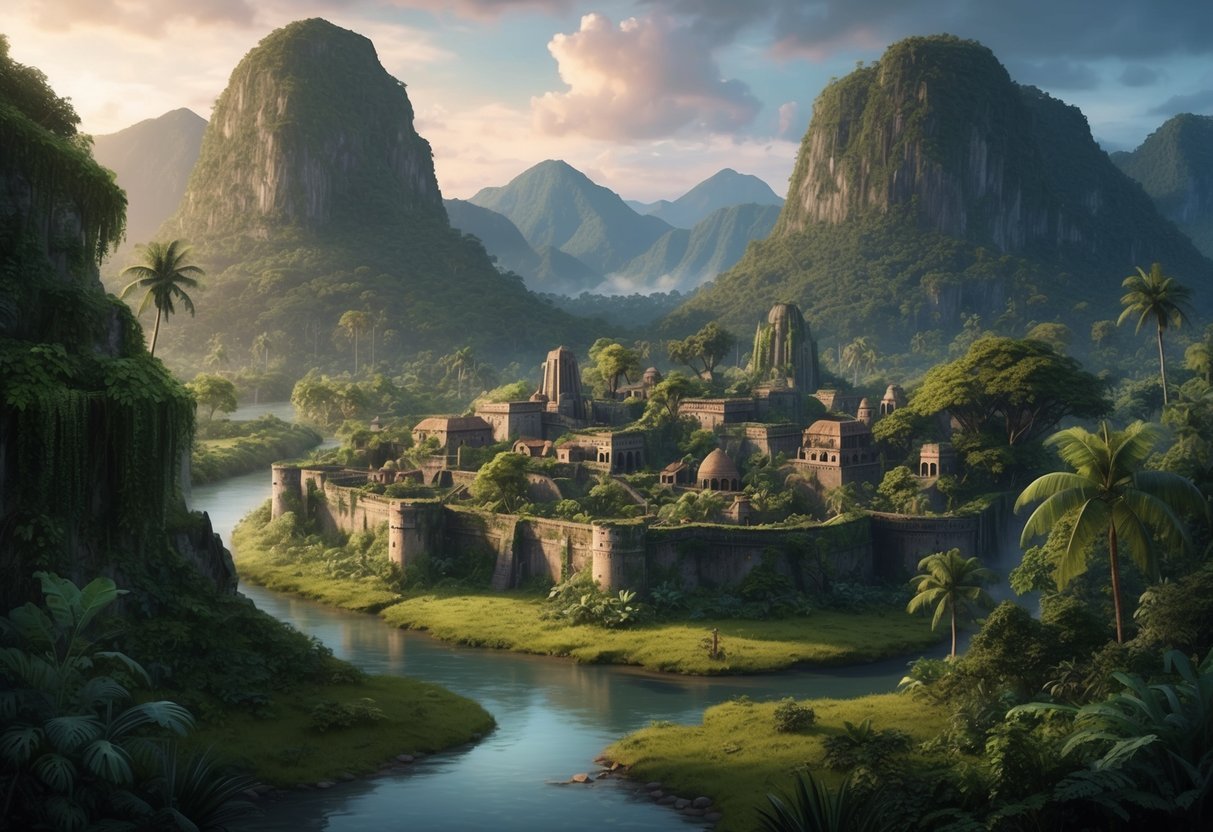
Some people think super old societies might have lived on Earth long ago. These ideas come from science and stories passed down through time.
The Silurian Hypothesis
The Silurian hypothesis is a cool idea some scientists came up with. It asks if there could have been smart beings on Earth millions of years before us.
Scientists named this idea after aliens from the TV show Doctor Who. Pretty neat, right?
The theory wonders if we could find proof of old tech-using creatures. It’s hard because most stuff wouldn’t last that long.
They think we might find clues in rocks or chemicals left behind. But so far, no one has found any real proof.
Mythology and Folklore
Old stories from around the world talk about lost cities and smart people from long ago. These tales spark our imagination.
Many cultures have myths about advanced civilizations that vanished. Atlantis is a famous one that lots of people know.
Some folks think these stories might be based on real places. But most experts say they’re just made-up tales.
These myths are fun to think about. They make us wonder about what life was like way back when.
Impact on Climate and Environment
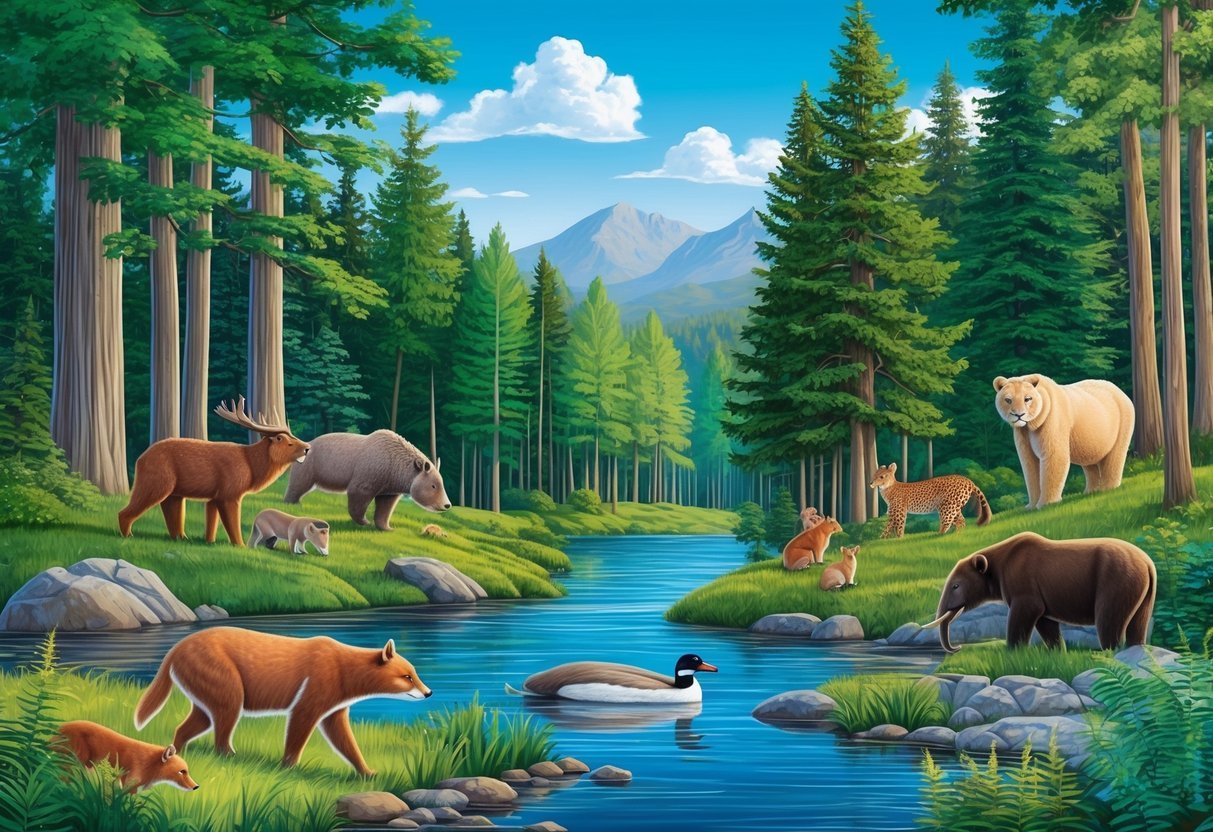
Ancient civilizations altered their surroundings in ways that affected climate and natural systems. These changes came from human activities and set off chain reactions in the environment.
Human-Induced Changes
Early humans changed landscapes through farming and grazing animals. They cleared forests for crops and let livestock eat wild plants. This removed trees and plants that absorbed carbon dioxide.
People also built cities and roads. These structures changed how water flowed and how heat moved in local areas. Some civilizations made big changes to coasts by building ports and sea walls.
Mining and burning fuels released gases into the air. While smaller than today’s emissions, these still had effects over time.
Natural Climate Feedbacks
Changes made by humans set off natural reactions. Cutting trees led to less rain in some places. This made it harder for forests to grow back.
Warmer temperatures from human activities melted ice in cold areas. The darker land or water absorbed more heat than ice did. This sped up warming even more.
Some civilizations faced droughts or freezing linked to these feedback loops. These climate shifts sometimes forced people to move or change how they lived.
Chronology and Dating Techniques
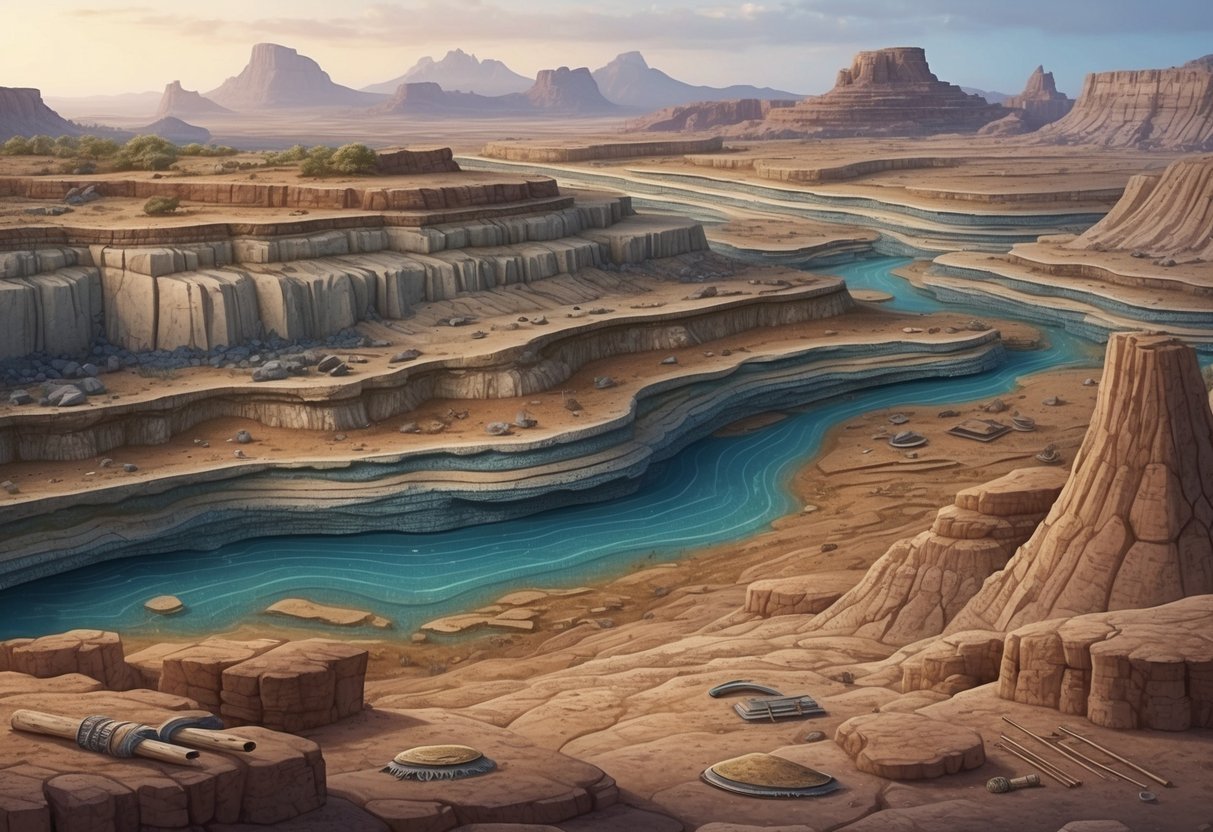
Scientists use special methods to figure out how old things are from long ago. These tools help us learn about people who lived before the Ice Age.
Radiocarbon Dating
Radiocarbon dating is a cool way to find out how old things are. It works on stuff that used to be alive, like bones or wood. The method looks at a special type of carbon in these items.
Scientists measure how much of this carbon is left. The less there is, the older the item. This helps figure out when ancient people lived.
Radiocarbon dating can go back about 50,000 years. That’s way before the Ice Age ended! It’s great for learning about early humans.
Ice Core Analysis
Ice core analysis is another neat trick. Scientists drill deep into ice sheets and glaciers. They pull out long tubes of ice.
These ice cores have tiny air bubbles trapped inside. The bubbles hold old air from long ago. By studying this air, we can learn about the climate back then.
Ice cores also have layers, like a cake. Each layer shows a year of snowfall. By counting layers, scientists can make a timeline. This helps match up with other dating methods.
Ice core analysis helps archaeologists understand what the world was like for early humans. It shows how the climate changed over time.
The Role of Art in Prehistoric Times
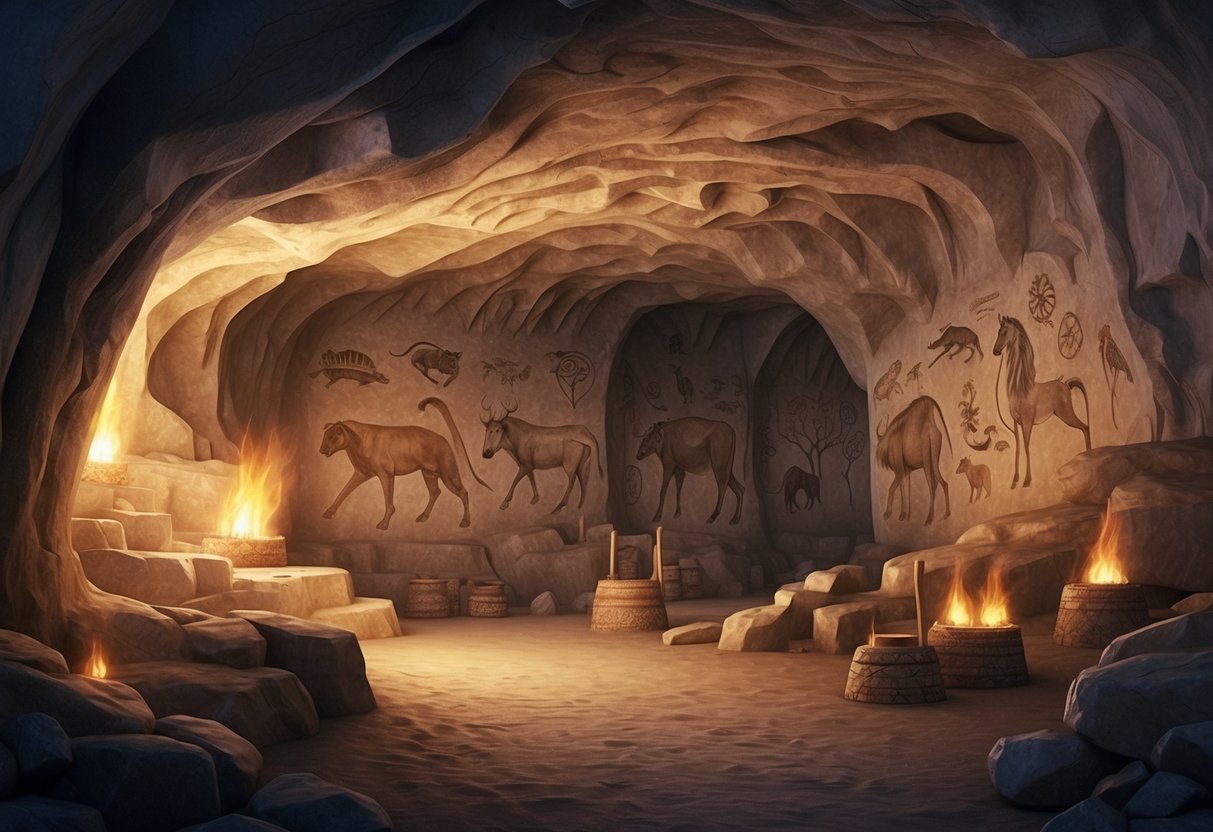
Art played a crucial part in early human societies. It served as a means of communication and left a lasting record of human existence. Cave paintings and small sculptures show the creativity of our ancestors.
Art as Communication
Prehistoric art was a way for early humans to share ideas and stories. Cave paintings often showed animals and hunting scenes. These images may have been used to teach hunting skills or share information about local wildlife.
Some art pieces had symbols or patterns. These might have had special meanings for the group. Hand stencils found in many caves could have been a way to mark territory or show group identity.
Art also likely played a role in rituals and ceremonies. Figurines and carved objects may have been used in spiritual practices. This suggests art was a way to connect with the unseen world.
Art as Record of Existence
Prehistoric art gives us a glimpse into the lives of early humans. Cave paintings show the animals they saw and hunted. This helps us understand their environment and diet.
Art from this time also reveals human activities. Scenes of dancing or gathering might show important social events. Tools and weapons in art tell us about their technology.
Some of the oldest known art comes from rock shelters. These protected areas preserved paintings and carvings for thousands of years. This art is like a time capsule, showing how people lived long ago.
Figurines and sculptures give us an idea of how early humans saw themselves. They show hairstyles, clothing, and body decorations. This art helps bring the prehistoric world to life in our minds.
Extraterrestrial Perspectives
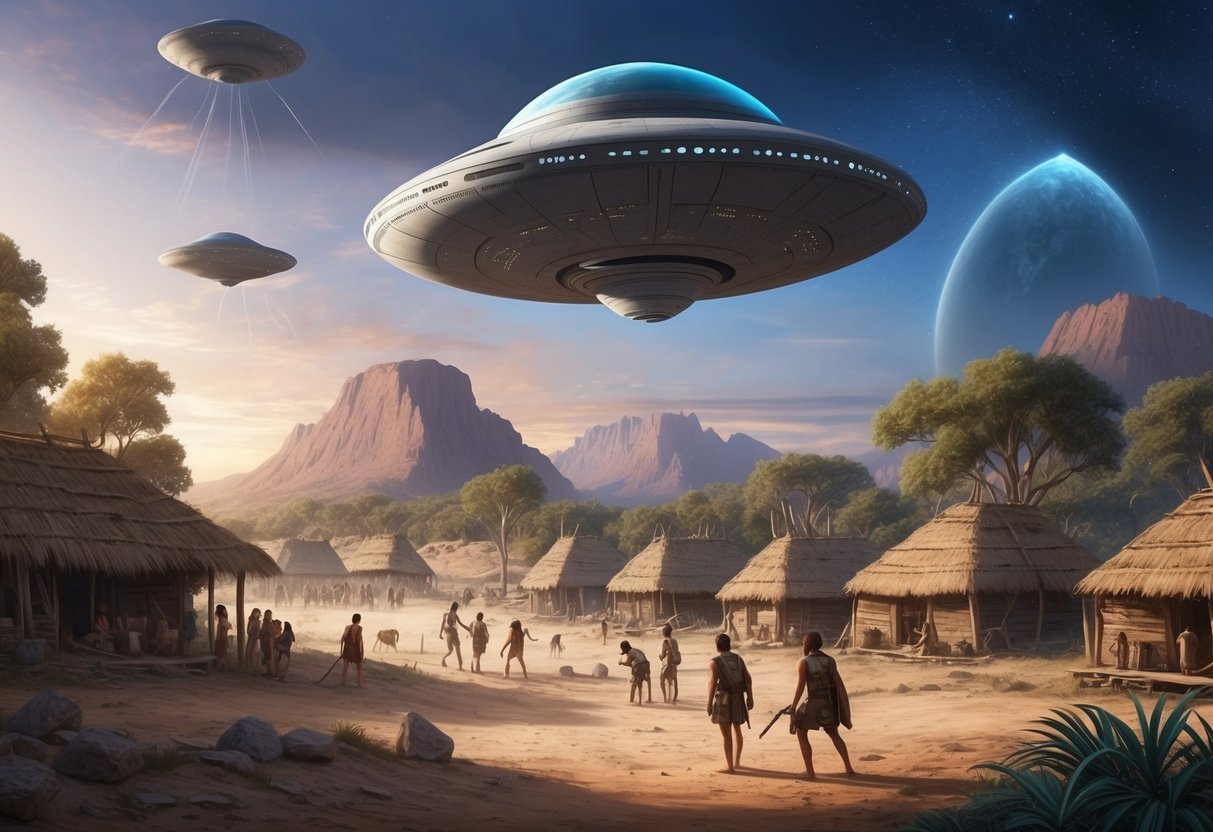
The search for alien life and ancient civilizations extends beyond Earth. Scientists look to the stars for clues about our past and possible visitors from space.
Search for Alien Civilizations
NASA and other space agencies scan the skies for signs of intelligent life. They use powerful telescopes and radio signals to find alien tech.
Some think aliens might have visited Earth long ago. These ideas spark the imagination but need solid proof.
Scientists at the Goddard Institute for Space Studies look for clues of past civilizations on our planet. They study geology and chemistry to spot unusual patterns.
Finding alien life would be huge. It could change how we see our place in the universe.
Implications for Human History
If aliens visited Earth before the ice age, it would rewrite history books. Some think ancient structures might be alien-made.
The International Journal of Astrobiology explores these ideas. They look at how alien contact might have shaped early humans.
Proof of aliens would raise big questions:
- Did they teach early humans?
- Are there hidden alien ruins?
- How did they affect our evolution?
Finding answers isn’t easy. Scientists need hard evidence to back up these exciting ideas.
Scientific Debates
Some scientists like Gavin Schmidt and Adam Frank look at this in a different way. They ask if we could find proof of very old civilizations.
They think about what signs an old civilization might leave behind. Things like:
- Changes in the earth’s temperature
- Unusual chemicals in rocks
- Strange patterns in fossils
Scientists call this idea the Silurian hypothesis. It’s named after a TV show.
Most scientists don’t think there were advanced civilizations before us. They say we would have found clear proof by now.

